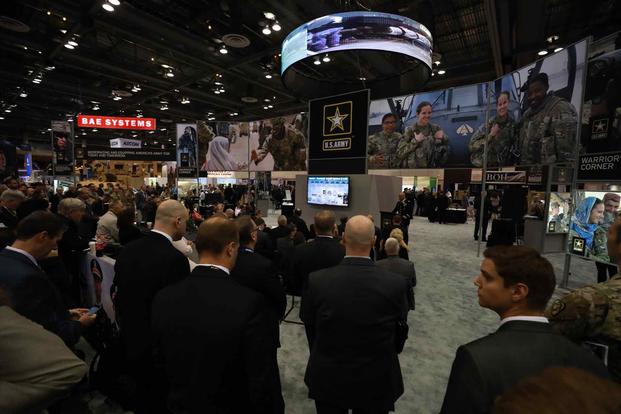More than 1,700 former acquisition officials, general officers and other senior employees who left the Defense Department in recent years have gone on to work for major defense contractors, the Government Accountability Office, or GAO, found.
Watchdog organizations and lawmakers such as Sen. Elizabeth Warren, D-Mass., have raised concerns about the so-called "revolving door" of former DoD officials moving to defense contractors -- in some cases, lobbying on issues they used to work on for the government.
In a report released Sept. 9, the nonpartisan agency called for the Pentagon to look at whether to toughen its acquisition rules to require contractors bidding for military contracts to prove that their employees are following lobbying restrictions, while pointing to the importance of enforcing existing laws to combat corruption concerns.
“The laws — some of which include penalties for violations — seek in part to protect against conflicts of interest and to promote public trust in the integrity of the government’s decision-making processes,” the report said.
Read Next: Oldest US Veteran of WWII Celebrates His 112th Birthday
The GAO's study found that, between 2014 and 2019, more than 100,000 military or civilian senior officials or acquisition officials left the Defense Department. In 2019, a total of 1,718 of them -- 1,616 former acquisition officials, and 102 former generals, admirals or senior civilians -- had been hired after 2016 at one of 14 major contractors the GAO reviewed, including Northrop Grumman Corp., Lockheed Martin Corp. and Raytheon Technologies. That included "cooling off" periods during which former employees had to wait before taking lobbying jobs.
The former acquisition officials surveyed were active-duty officers and civilian officials who served in crucial acquisition jobs, such as program managers or contracting officers.
Weapons developers -- companies that hold some of the biggest military contracts -- tended to employ more former senior or acquisition officials than contractors that provide off-the-shelf goods or services, the GAO found.
Raytheon had the highest number of these employees -- 315 former senior or acquisition officials hired since 2016 were on its payroll as of 2019, helping to work on $7.5 billion in contracts.
Northrop and General Dynamics Corp. were close behind, with 289 and 287, respectively. Northrop had $4.8 billion in DoD contracts that year; General Dynamics had $4.4 billion.
During the same period, Lockheed employed 253 former senior and acquisition officials and held $13.4 billion in military contracts.
The GAO suggested the Pentagon consider adding recent prohibitions on lobbying activities by former senior officials -- passed in the 2018 National Defense Authorization Act -- to its official acquisition regulations. That would require contractors to show whether their employees are complying with the NDAA's lobbying restrictions as part of their proposal for military contracts.
Defense officials told the GAO they originally didn't consider putting that provision into the regulations because the section of the NDAA that included it didn't specifically address acquisition. However, the Pentagon agreed to consider folding the lobbying rules into its acquisition regulations, promising to have the undersecretary of defense for acquisition and sustainment look at the suggestion.
-- Stephen Losey can be reached at stephen.losey@military.com. Follow him on Twitter @StephenLosey.
Related: This Is How the Biggest Arms Manufacturers Steer Millions to Influence US Policy












